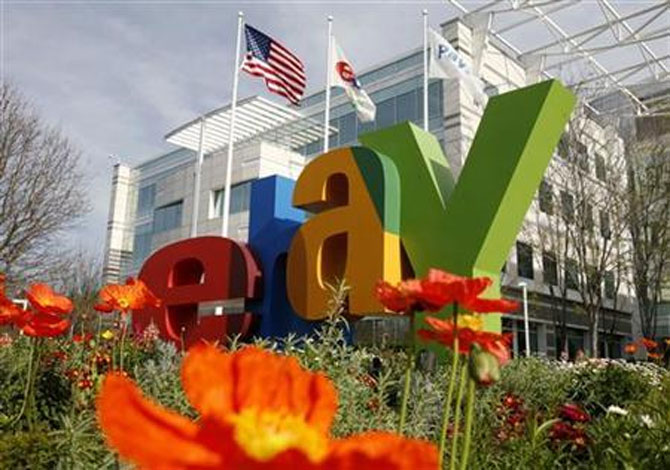
In its race to climb up the charts in e-tailing revenues, it is picking new revenue streams that others are yet to adopt, for example, carrying ads
When eBay did its first round of funding in June, 2013, in Snapdeal, a home-grown e-commerce site, it was expected to benefit from the desi company’s supply chain knowhow. eBay, which entered India in 2004 after acquiring online marketplace Baazee.com, follows a pure-play model, while Snapdeal has a hybrid one. However, with eBay’s latest round of funding of $133 million (Rs 830 crore), Snapdeal says it has learnt some tricks of the trade from the much larger US-based e-commerce company.
As in pure-play marketplaces, including eBay, the third-party sellers handle deliveries, that could lead to inconsistencies in customer experience. Snapdeal had gone from a group-deals site to being a marketplace in 2012, but retained its own fulfillment centres. The consignments from the sellers would be checked for quality.
“We continue to invest in Snapdeal due to its complementary business model, good management team and strong brand,” says Latif Nathani, managing director, eBay India. Now, Snapdeal also hopes to tap into more sources of revenue than its consumer goods and fashion portfolio using lessons from eBay.
Click on NEXT for more...

One of the largest new sources would be advertisements. For eBay, ads provide it with one of the biggest revenue streams, both in India and abroad. Kunal Bahl, co-founder and chief executive of Snapdeal, says, “We have learnt a lot of things from eBay. They really bring in a lot of value addition as investors.”
Bahl says, “Sites such as Amazon earn revenues of $1 billion through this channel. It is a big opportunity for us,” adding that a handset company is already advertising on Snapdeal.
Snapdeal’s larger Indian rival, Flipkart is not too keen on such a source. “Our move to delight the customer begins with a clean, fast and engaging user-interface,” says Sachin Bansal, co-founder and CEO, Flipkart. Bahl has already planned for integrating advertisements better. The key would be to customise the ads. “If you buy furniture on our site, we can display ads relating to furnishing based on data,” says Bahl.
Click on NEXT for more...

In Snapdeal’s race to reach the billion-dollar milestone in the next couple of months, it is also betting big on selling online courses. The site expects 20 per cent of its revenues to come from this in the next couple of years. The company has tied up with 20 such online course providers such as Edukart and Simplylearn.
In the world’s third-largest online-user market, e-commerce is poised to grow. Yet, only 12 per cent of Indian users buy on the internet as against 64 per cent in the US.
According to the Internet & Mobile Association of India, the e-commerce sector has grown from $3.8 billion (Rs 23,560 crore) in 2009 to $9.5 billion (Rs 58,900 crore) in 2013. The share of e-tailing has grown from 8 per cent in 2009 to 16 per cent in 2013.
Bahl claims Snapdeal has one-third share in the e-commerce market. Clocking sales of around $750 million, Bahl says the site has an assortment of 4 million products, and adds a new one every 30 seconds.
Click on NEXT for more...

A Macquarie research recently pointed out that the challenges for a marketplace include dependency on third-parties for supply chains and payments.
Snapdeal has some control over quality at its fulfillment centres. Its feature, Trustpay, gives buyers a full refund if they are unhappy with the product. The payment to sellers is made only after a week if there are no complaints.
However, Snapdeal will see more competition in the marketplace, where sites do not own inventory but become a facilitator between sellers and buyers. While Flipkart shifted to it last year, another site, Myntra shifted recently.
But Bahl says, “We have 100 per cent traffic for the sellers, unlike others that share only a percentage of their user traffic with sellers.” Though, Bansal clarifies that for Flipkart too, “all the traffic that is for sellers. We have 14 million registered users and more than 1 million daily visitors directed to our 1,000+ seller base”.
Click on NEXT for more...

Snapdeal, meanwhile, is opening up new battlefronts. It is looking to extend its same-day delivery services to more cities, after its launch in Delhi-NCR in January. Orders placed before 1 pm would be supplied the same day, free of cost. Flipkart charges Rs 90 per product for delivery the next day, in seven cities. Fashion-focused Myntra has also started same-day delivery in some cities.
Snapdeal is also looking to launch vernacular websites, beyond the Tamil and Hindi versions that handle 1,000 orders per day between them. Bahl says that Snapdeal is ready to trade off profits to focus on growth for now. The influx of funds and new revenue streams could make the compromise short-lived.
Opens new battlefronts